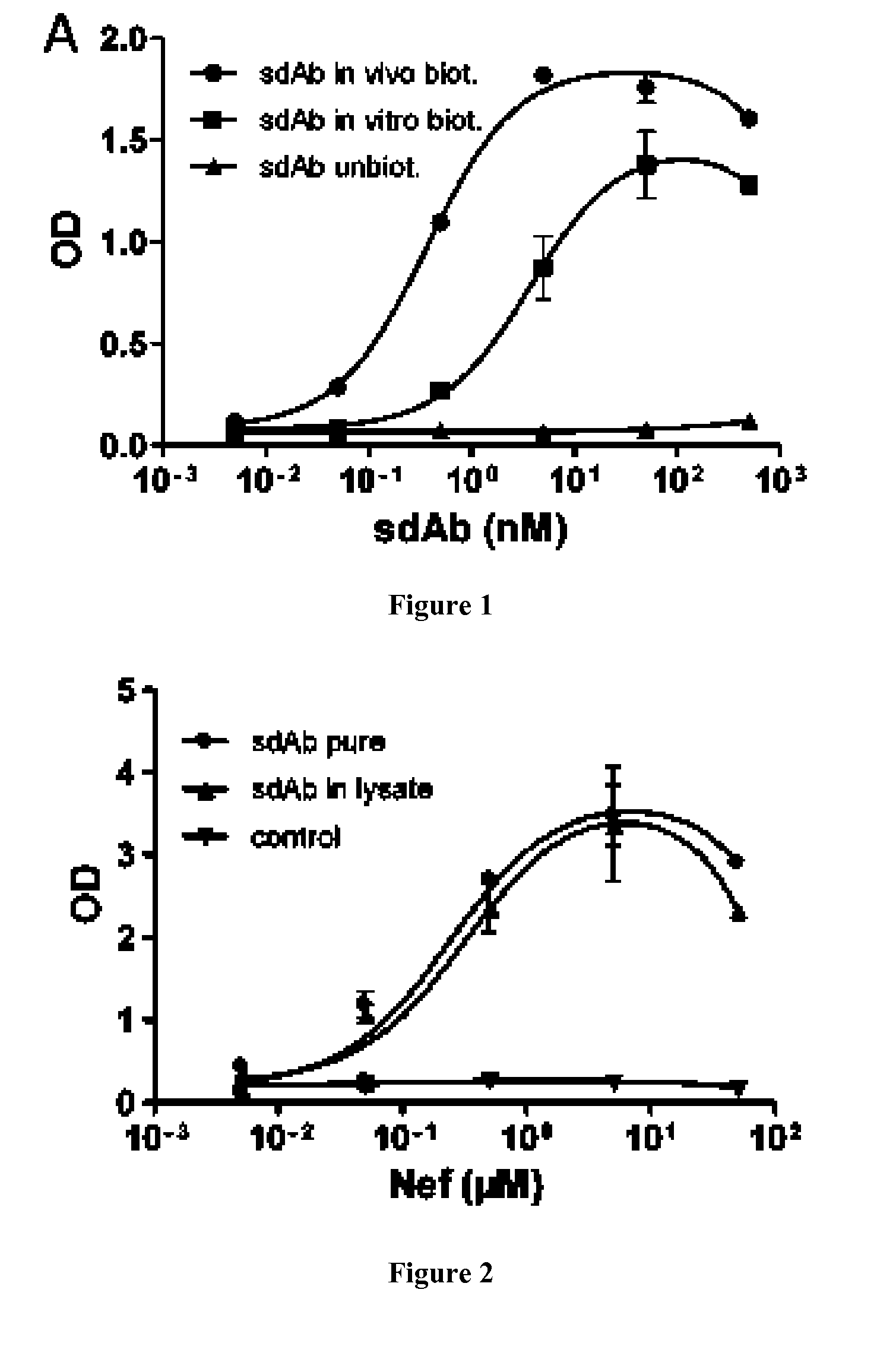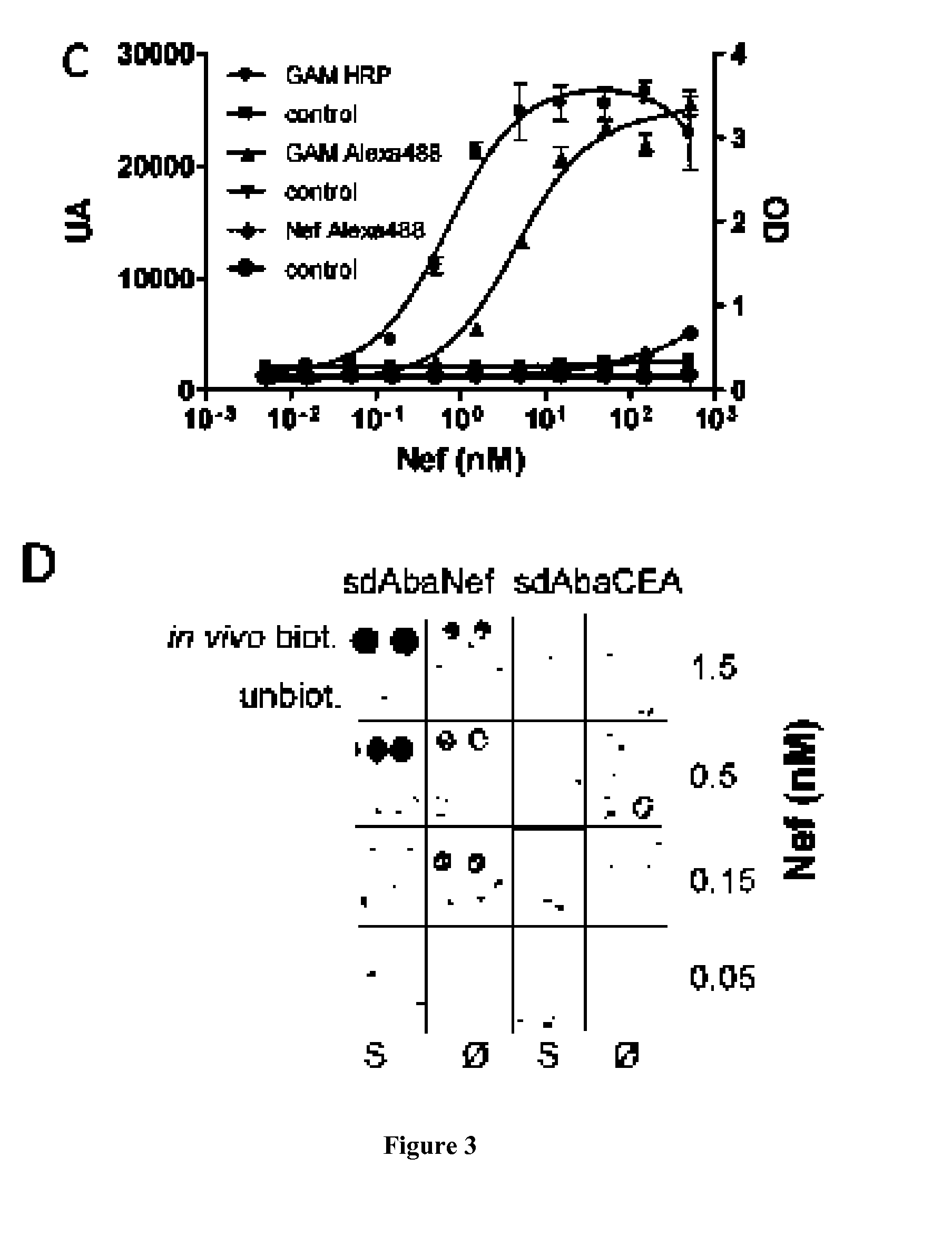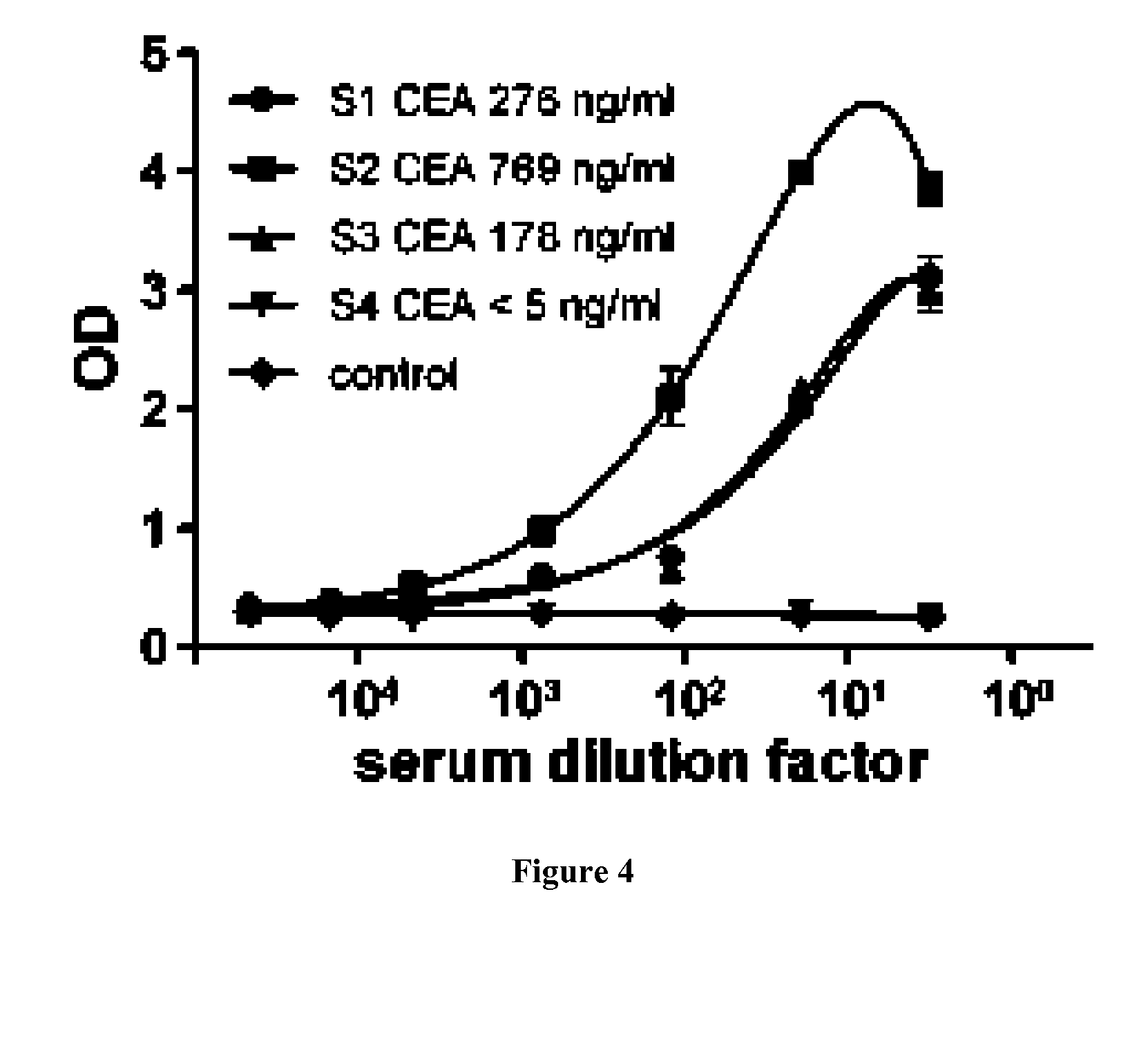Methods for preparing single domain antibody microarrays
a single-domain antibody and microarray technology, applied in the field of single-domain antibody microarrays, can solve the problems of difficult to define general protein detection and immobilization strategies, design is not compatible with high-density arrays, and antibodies and proteins in general are chemically and structurally much more complex
- Summary
- Abstract
- Description
- Claims
- Application Information
AI Technical Summary
Benefits of technology
Problems solved by technology
Method used
Image
Examples
example 1
Strong and Oriented Immobilization of Single Domain Antibodies from Crude Bacterial Lysates for High-Throughput Compatible Cost-Effective Antibody Array Generation
[0088]The results reported in EXAMPLE 1 were presented in a scientific article (Even-Desrumeaux K, Baty D, Chames P. Strong and oriented immobilization of single domain antibodies from crude bacterial lysates for high-throughput compatible cost-effective antibody array generation. Mol Biosyst. 2010 November; 6(11):2241-8. Epub 2010 Sep. 21.), which is incorporated herein by reference in its entirety.
[0089]Material & Methods
[0090]Proteins and Serum Sample
[0091]Anti-HIV-1 Nef sdAb (Bouchet J, Basmaciogullari S E, Chrobak P, Stolp B, Bouchard N, Fackler 0, Chames P, Jilicoeur P, Benichou S, Baty D (2011) Inhibition of the Nef regulatory protein of HIV-1 by a single-domain antibody. Blood, 117, 3559-68 and [21]) and anti-CEA sdAb [22] were selected from immunized sdAb libraries. pET vector were used to produce in vivo biotinyl...
example 2
Use of Single Domain Antibody Array for Screening Breast Cancer Antigens
[0130]Material & Methods:
[0131]Production and Purification of sdAbs:
[0132]In vivo production of biotinylated sdAbs was performed as described in EXAMPLE 1.
[0133]ELISA on Epoxy Beads:
[0134]Antigens HER2-Fc (R & D systems) or Fc were immobilized on magnetic epoxy beads (Dynabeads, invitrogen) during 48 h at 4° C. following recommendation of the manufacturer. For ELISA, 2 μl of beads / well is used. Beads were blocked with 5% milk-PBS (MPBS) for two hours at RT. Beads were washed and incubated for 1 h at RT with 50 μl of 2% MPBS containing primary antibodies: in vivo biotinylated sdAbs-aCEA or -aHER2 at 10 μg / ml or HRP-conjugated anti-Fc mAb at 1 μg / ml. After three washes with PBS, beads with sdAbs were incubated with HRP-conjugated streptavidin (Jackson) (1 μg / ml) in 2% MPBS for one hour at RT. After three washes in PBS, bound secondary antibodies were detected using ABTS. Coloration was followed at 405 nm.
[0135]ELI...
example 3
Use of Single Domain Antibody Array for Multiplexed Analysis
[0144]Methods:
[0145]Four types of CBA Functional Bead system (BD Biosciences) were used for the assay. The Functional Bead Conjugation Buffer Set was used for conjugation of streptavidin to beads following the recommendation of the manufacturer. For multiplexed assay, 1.5×105 beads of each type were used per assay. The whole procedure was performed in the dark. Beads were coated with sdAbs individually and all types of beads were mixed for the rest of the procedure. Beads were blocked with 3% BSA PBS for 2 h at RT. Then beads were incubated with in vivo biotinylated sdAb (sdAb-aHer2, -aCEA, -aCK19, -KE23) at 10 μg / ml in 1% BSA PBS for 1 h at RT. After two washes with PBS, all beads type were mixed and incubated for 1 h at RT with serial dilution of sample containing patient serum with CEA, recombinant HER2-FC (R & D systems), lysate of a breast cancer biopsy (“biopsy 5712”). After two washes with PBS, beads were incubated f...
PUM
 Login to View More
Login to View More Abstract
Description
Claims
Application Information
 Login to View More
Login to View More - R&D
- Intellectual Property
- Life Sciences
- Materials
- Tech Scout
- Unparalleled Data Quality
- Higher Quality Content
- 60% Fewer Hallucinations
Browse by: Latest US Patents, China's latest patents, Technical Efficacy Thesaurus, Application Domain, Technology Topic, Popular Technical Reports.
© 2025 PatSnap. All rights reserved.Legal|Privacy policy|Modern Slavery Act Transparency Statement|Sitemap|About US| Contact US: help@patsnap.com



